The Generous Gift of Good Soil
Get to know three organizations whose financial contributions will have a lasting impact on soil health and rancher well-being.
For decades, farmers and ranchers who implemented soil health principles have improved the overall health of their land and experienced more profitable operations. However, these observations have — to this point — been largely anecdotal.
The $19.2 million research project, led in part by the Noble Research Institute, is aimed at understanding how a farmer or rancher’s grazing management decisions impact soil health on pasture and rangeland and, in turn, how soil health can positively impact a producer’s land and well-being.
This critical project wouldn’t be possible without generous contributions from The Jones Family Foundation, ButcherBox and Greenacres Foundation.
Their support highlights the important role private philanthropy plays in agricultural research.
The Jones Family Foundation
Max Jones says it was a no-brainer for him to follow his heart into agriculture, but he knows that’s not the case for everyone.
While he grew up raising cattle, the endeavor had always been more of a hobby for his family.
“There was never any contention,” he says. “Never any memories of grinding through tough years on grandpa’s farm. It was always about joy.”
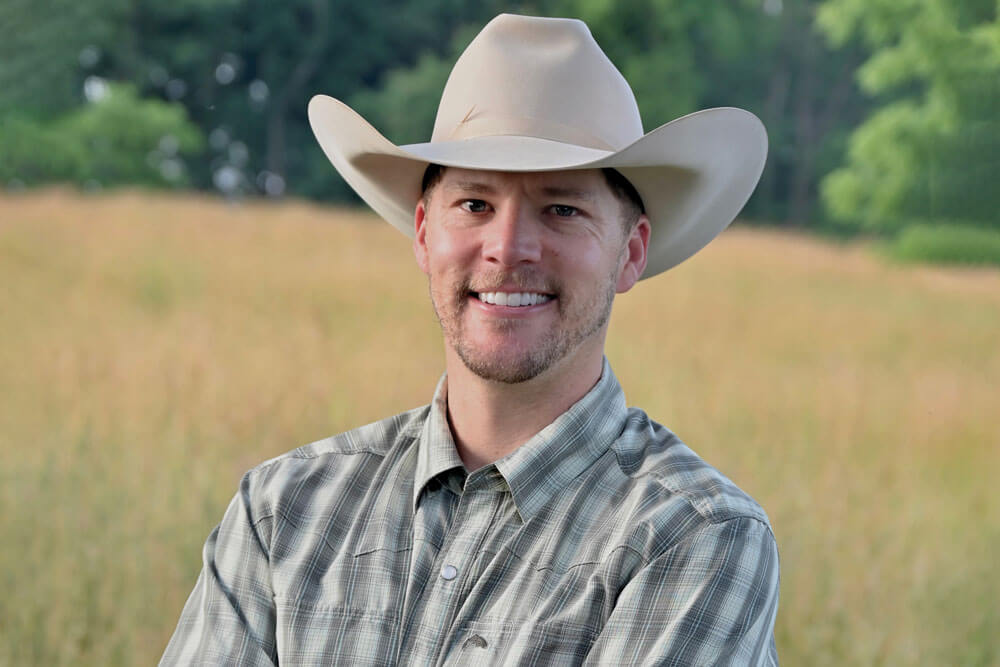
Our greater goal is to support research that better identifies and promotes total ecosystem health and function.”
Max Jones
But despite his rather idyllic first exposure to the cattle business, Jones fully understood that ranching wasn’t easy. He wanted to learn — especially the aspect of balancing best practices for the environment without sacrificing profitability. Because once he became a full-time rancher, his days as a carefree cattleman were over. That bottom line meant something. And to him as an outdoorsman, the land did, too.
“We inherently know certain practices are going to be better for the soil health of a system,” he says. “But we might lose some gain on our cattle and therefore lose some dollars on certain contracts that we have. Those are areas where I want to be able to reduce that sort of stress or contention.”
Through his family’s private foundation, he had the opportunity to do just that. Founded in 2009, The Jones Family Foundation’s initial mission was specific to human health and the functional needs of society. But it has evolved to focus on the total health of a community.
“We’re now broadening our mission to include promoting research that helps us better understand how our landscapes function and how they are a contributory component of the overall health of our greater community,” Jones explains. “In other words, our greater goal is to support research that better identifies and promotes total ecosystem health and function.”
But he’s more than a donor to this work. Jones helped build the concept in 2019 that would evolve to become Metrics, Management, and Monitoring with Jason Rowntree, professor of sustainable agriculture at Michigan State University, and Chad Bitler, research scientist at Greenacres Foundation. He’s enjoyed seeing the project mature to a point that the Foundation for Food and Agriculture Research awarded Noble Research Institute a $9.5 million grant in 2021 to help take it to the next level.
Supporting this research is a strong step in the right direction toward quantifying ecosystem function, Jones says, and “therefore tying that piece into total landscape health and how the health profile of that landscape better promotes (or degrades) human health and well-being.” He adds that he thinks the outcomes will be profound and far-reaching. “I think this will be the real beginning of land managers being able to truly and realistically place a dollar figure on the ecosystem services they are providing for greater community system,” he says. And what’s good for graziers is good for the community.
“It’s all tied in,” Jones says. “It’s all for the betterment of the ecosystem. So, what we do at the ranch affects what happens across every portion of the planet. If we are focusing on soil health, water cycling and the energy budgets … those things have a very broad ripple effect. What is that saying? A rising tide lifts all boats.”
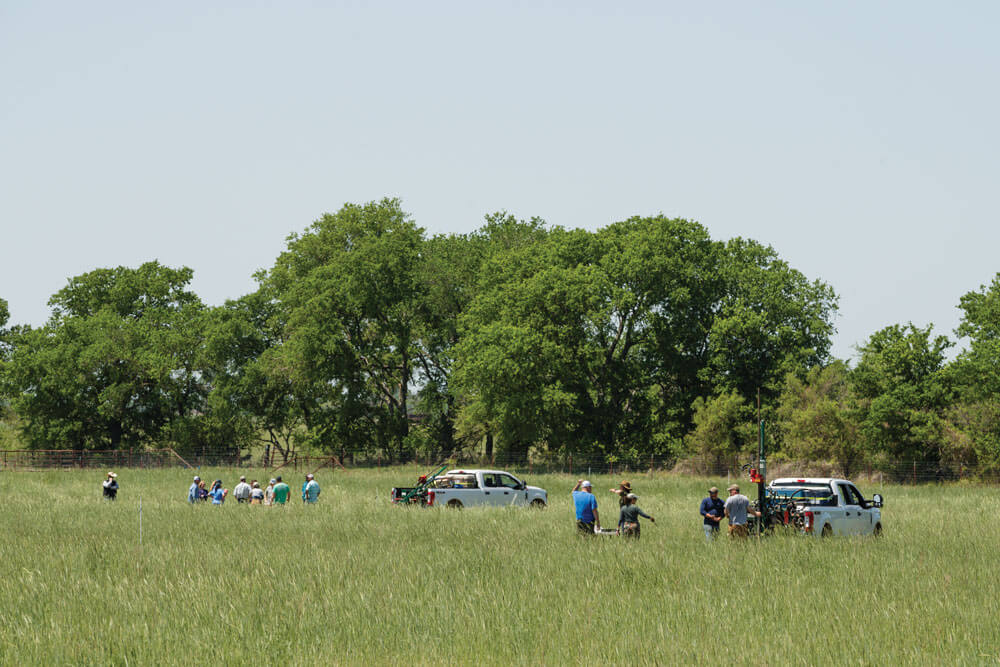
Butcherbox
When Mike Salguero launched ButcherBox, the mission was simple: make high-quality, grass-finished beef accessible to more consumers no matter where they lived or what kind of freezer space they had.
But seven years after the first-ever meat subscription sold, ButcherBox is about so much more.
Evadne Cokeh, ButcherBox’s vice president of social and environmental responsibility, says the company strives to do everything better — delivering the best meat; supporting farmers and ranchers; caring for the land and animals; and upholding diversity, equity and inclusion across the business.
Their customers have high expectations, and they strive to exceed them. Recently, Cokeh says that meant focusing on the company’s social and environmental responsibility and pursuing (and attaining) B Corp Certification. The designation is awarded to for-profit organizations based on factors ranging from how they treat and compensate their employees to their carbon footprint. The certification is only valid for three years, which makes it not only a mechanism for transparency but for accountability, as well.

I’ve been really excited about noble’s project because it’s so holistic… And really thinks about what’s good for the rancher.”
Evadne Cokeh
“Our business itself is driving toward what we believe is the right future, the right thing to do and the right kind of long-term objectives,” she adds. Cokeh says ButcherBox was thrilled to learn of the Metrics, Management, and Monitoring project and be able to contribute financially.
“I’ve been really excited about Noble’s project because it’s so holistic and really mirrors our mission and thinks about what’s good for the rancher,” she explains. “And I’m excited to see that economic prove-back.”
Further, Cokeh says the data that comes from a project like this will allow ButcherBox to better share how loving the planet and loving beef don’t have to be mutually exclusive.
“The common perception right now is if you really care about the environment, then you should stop eating meat, particularly beef,” Cokeh says. “But when we look at the ranches we purchase from, we see a really healthy ecosystem.”
Unfortunately, the studies that have been available to date have been smallscale or only looking at one soil type, she says. But this multi-year study, which encompasses many different soil types across different regions, is different.
“We don’t want to greenwash consumers,” she says. “We want to be able to prove these claims. And then we’ll be able to shift the narrative.”
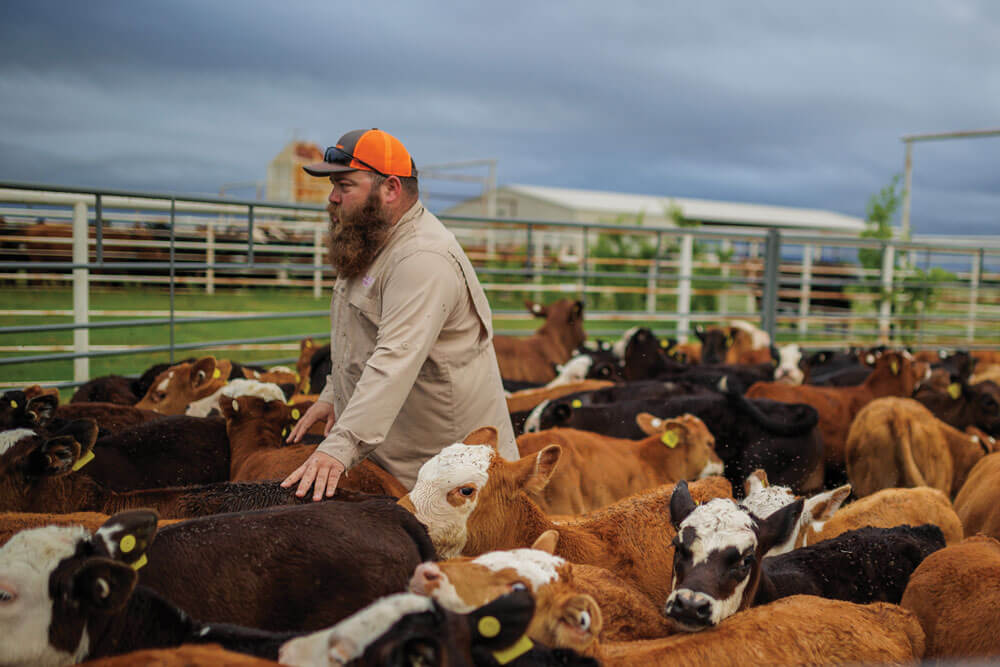
Greenacres Foundation
When the late Louis Nippert bought the first section of Greenacres property in 1949, it was a former corn and soybean farm…and it was spent.
“1945 was approximately the year when the salesman showed up with a 50-pound bag of pellets and would tell the farmer, ‘This replaces 3 tons of that manure you’ve been spreading on your field, and it’s a lot easier,’” Randolph explains.
Nippert wanted to restore the soils naturally, the way he’d witnessed the bison do out West. Of course, bison are notoriously harder to handle, so he swapped in Angus cattle while otherwise applying Mother Nature’s principles. Through regenerative grazing practices, he began to bring the life back to the soil. As he bought more land, he continued managing it with that same mindset.
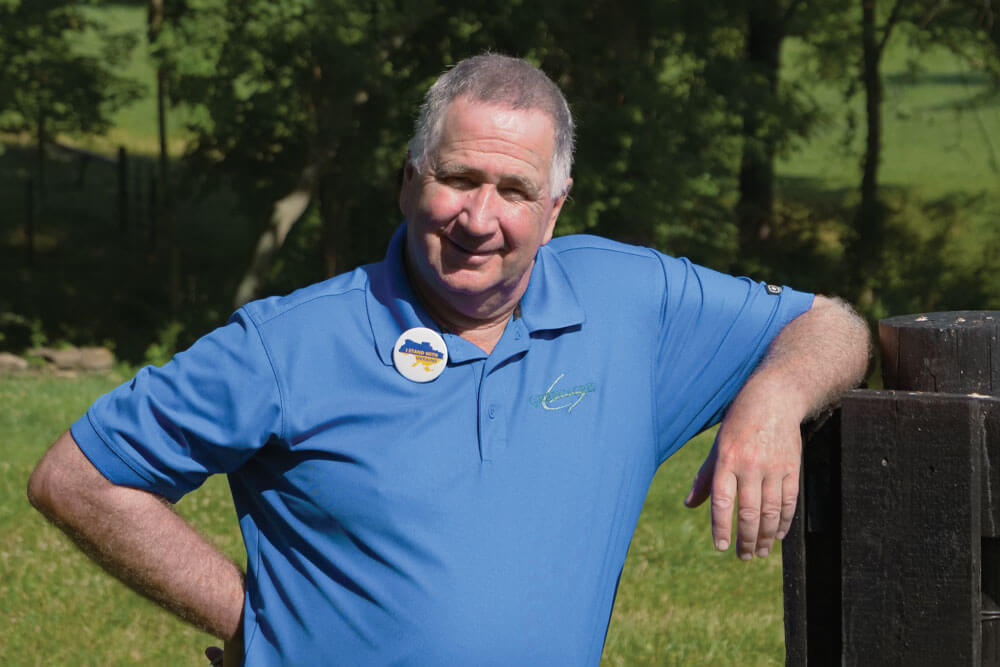
We believe you have to tell truths and facts, and you can only do that if you have followed good scientific design from a to z.”
Carter Randolph
While the Cincinnati, Ohio, farm was operated more for pleasure than profit, Nippert and his wife, Louise, were passionate about doing things right and sharing the land and their passions with others. In 1988, wanting to give back to the community, they started Greenacres Foundation with the intent to preserve the land for the education and enjoyment of future generations. Their mission lives on today, serving more than 30,000 students a year, while expanding into new communities.
Combining his love of science and her love of the arts, the couple began inviting school groups to Greenacres to study plant and animal life in their natural settings. To encourage appreciation of music and culture, they added facilities and created an atmosphere that would allow artists to display their talents
Nippert’s regenerative mindset lives on, too. The foundation has recently added two more farms, and both are being managed in a way that would make the founder proud.
There are the 450 acres in Brown County, Ohio, that had been in a cycle of plant, spray Roundup, harvest, spray Roundup — and repeat. Now, soil health comes first and staff is collecting data to measure the improvements after converting it to regeneratively managed grazing lands.
And then there’s the operation near Batesville, Indiana, which will be used for both grazing and vegetable gardens. The foundation is monitoring the impact of switching from a traditional grazing program to a rotational system.
“We want to measure the change from putting the cows out and letting them decide what and where to eat versus bunching them up and us deciding,” Randolph says.
While Greenacres Foundation collects its own data, its leadership jumped at the chance to contribute to a large-scale project like Metrics, Management, and Monitoring: An Investigation of Pasture and Rangeland Soil Health and Its Drivers.
“We believe you have to tell truths and facts, and you can only do that if you have followed good scientific design from A to Z — not from A to B in your analysis of what you’re doing,” Randolph says. We live in a world today where analysis tends to be confined by the length of a Tweet, he says. People “forget that there’s a complex system that we’re working in that requires a lot more knowledge than you can express in 60 words.”
He expects the research truly will quantify the many benefits of a regenerative approach to grazing.
“I’m hopeful the project continues to point to the idea that we need to take full analysis and not just pull out a hammer or whatever tool we have in our toolbox and say, ‘We can solve the problem with this,’” Randolph says. “We need to work with nature and enhance nature, as opposed to confining nature and putting a technology over the top of it and then finding out a few years later we have an unintended consequence that is far worse than what we were originally dealing with.”
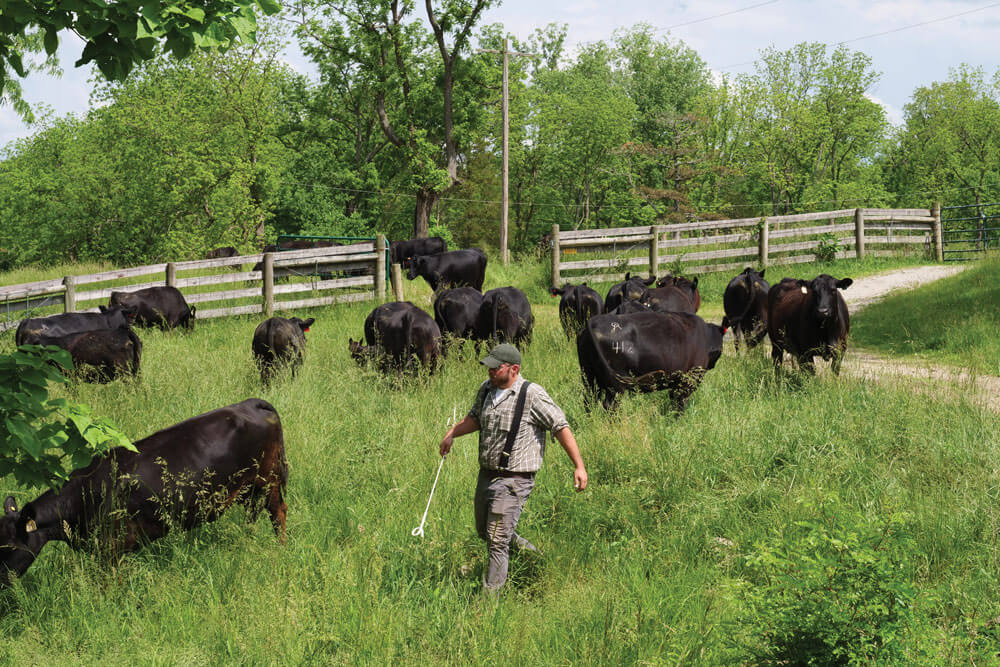
We will continue to publish our weekly periodical, Noble Rancher (replacing Noble News & Views), to provide you with timely, producer-guided information to assist you in adoption and sustained use of regenerative principles. We also will continue to add and deliver resources through www.noble.org.
We are excited about focusing our people and programs on regenerative ranching. We are building something to help farmers and ranchers reach their objectives for success while also caring for the land. This is our calling.

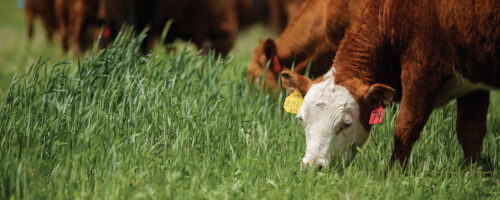
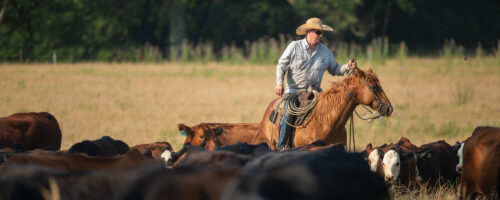
Comment